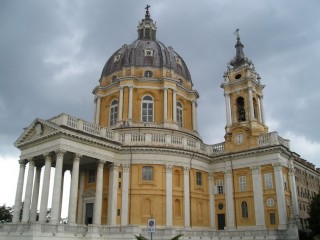
Filippo Juvara biography
Date of birth : 1678-03-27
Date of death : 1736-01-31
Birthplace : Messina, Sicily, Italy
Nationality : Italian
Category : Arhitecture and Engineering
Last modified : 2011-05-01
Credited as : Architect, Basilica Superga, Palazzo Madama in Turin
Filippo Juvara (1678-1736), the greatest Italian architect of the 18th century, was an immensely imaginative and prolific designer.
Filippo Juvara was born in Messina, Sicily, on March 27, 1678, the son of a silversmith. In Messina he would have seen the buildings of Guarino Guarini, but at this stage of his career he was probably equally influenced by the exuberant fantasy associated with his father's trade and his Sicilian background, so that it is not surprising to find him practicing as a stage designer in later years.
In 1703 or 1704 Juvara went to Rome and began to work under Carlo Fontana, the most celebrated architectural teacher of the age. Fontana is said to have told Juvara to forget everything he had ever learned and to start all over again: this may well be true, since Fontana's late baroque style was much more classical than the—presumably riotous—fantasy of Juvara's imagination at that time.
From 1708 to 1714 Juvara worked in Rome for Cardinal Ottoboni as a stage designer and architect. Juvara's early architectural style is obscure, but a sketchbook dating from the decade he spent in Rome is evidence of his inventiveness. All his life he designed ornament and decoration in a rich and exuberant style, but the classical discipline he learned from Fontana provided an effective restraint.
In 1714 Juvara returned to Sicily to design a royal palace for Victor Amadeus II of Savoy, who had just become king of Sicily, but within a few months he was established as the royal architect in Turin. Juvara did an immense amount of work in Turin in a short time, including the planning of two quarters of the city and the designing of four royal residences, palaces for individual nobles, and five churches.
Juvara traveled to Portugal in 1719-1720, designing a royal palace at Mafra and other buildings, and to London and Paris in 1720. In 1735 he went to Madrid to design another royal palace; he died there, suddenly, on Jan. 31 or Feb. 1, 1736.
Juvara's Palazzo Madama in Turin (1718-1721) is a splendid combination of the traditional Italian palace type with the regal elements of Versailles, the object of every prince's envy at that time. The Palazzo Madama contains a superb staircase hall, unusual in Italy, but a feature of Versailles. His huge royal hunting lodge at Stupinigi near Turin (1729-1733) also shows French influence.
The architect's masterpiece is the church and monastery of La Superga (1716/1717-1731), set high on a mountain overlooking Turin with a stupendous view of the Alps. This was a votive offering from the King and is therefore richly decorated. The combination of the huge dome set between two towers (perhaps a reminiscence of Francesco Borromini's S. Agnese in Rome and Christopher Wren's St. Paul's in London) and the long, low buildings of the monastery gives a picturesque outline to the whole and is very close to similar scenic compositions in the monasteries at Melk, Austria, and Einsiedeln, Switzerland, which are almost exactly contemporary.
















